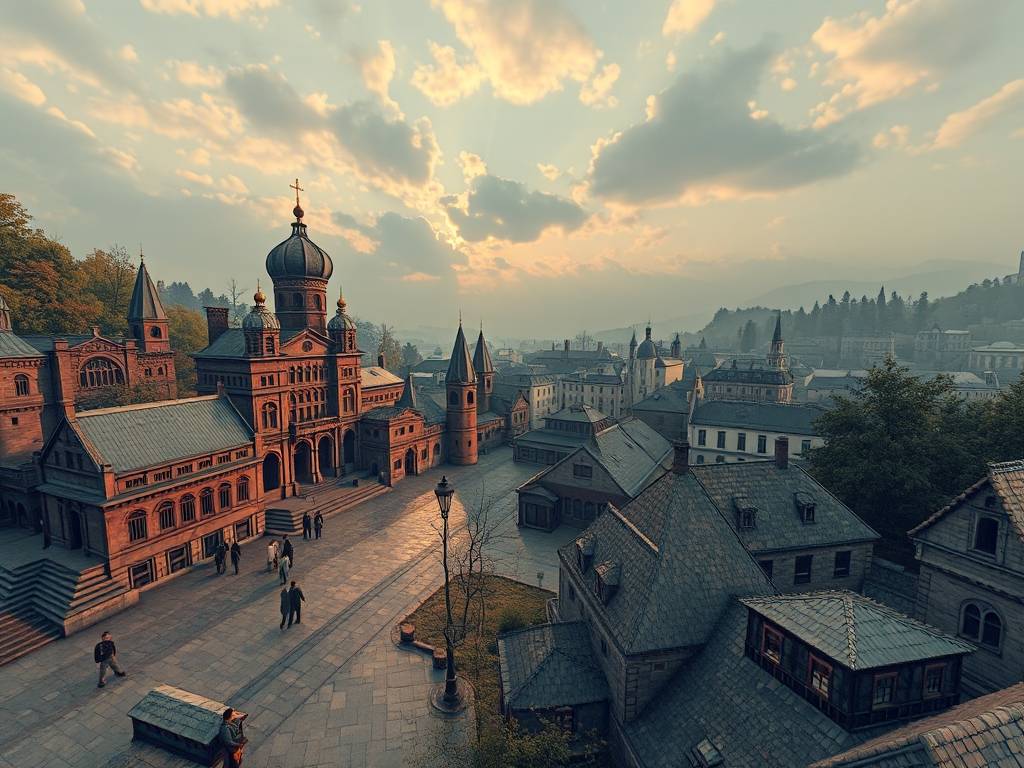Time Simulator VR: A Journey Through the New Historical Eras Expansion
Have you ever stood before a great pyramid and wondered, not just how it was built, but why? Have you felt a pang of curiosity about the smell of the air in a bustling Roman forum, or the sound of a scribe’s stylus in a Mesopotamian temple? For years, history has been a story told through books and screens, a two-dimensional narrative we observe from a distance. But what if you could step through the page? What if you could stop observing and start experiencing?
This is the promise fulfilled by the latest, groundbreaking update to the acclaimed virtual reality platform: the Historical Eras Expansion for Time Simulator VR. This isn't just an update; it's a paradigm shift in experiential learning and digital entertainment. It transforms your VR headset from a gaming peripheral into a bona fide immersive historical time travel device. Let's embark on a journey to explore how this expansion is set to revolutionize our connection with the past.

Beyond the Headset: The Philosophy of True Presence
The core innovation of the Historical Eras Expansion isn't just its stunning visual fidelity or its realistic physics—it's its commitment to what we call "Contextual Presence." Previous attempts at historical VR often felt like polished museums you walked through. Beautiful, but silent. Static. This expansion breathes life into the diorama. It populates its worlds with AI-driven digital inhabitants who live, work, argue, and celebrate according to the social and economic rules of their time. You aren't an invisible ghost; you are a participant, an observer woven into the very fabric of the era.
This is achieved through a sophisticated interactive historical simulation engine. The weather changes, crops grow, markets fluctuate based on simulated supply and demand, and political rumors spread through the crowds. This creates a dynamic, living world that responds to your presence without revolving around you. You are witnessing history as it might have been lived, not a pre-scripted cinematic sequence. This addresses a fundamental user desire: the craving for authenticity and a genuine sense of "being there."
A Tour Through the Eras: Your New Virtual Destinations
The expansion launches with three meticulously crafted epochs, each offering a unique narrative and sensory experience. These are not mere levels; they are sprawling, open-ended environments teeming with opportunities for discovery.
1. The Cradle of Civilization: Dawn in Mesopotamia (c. 2000 BCE) Your journey begins at the break of dawn in a thriving Sumerian city-state. The first thing you notice is the hazy glow of the sun over the mud-brick structures and the distinct, damp smell of the Euphrates riverbank. Here, the key concept is foundation. You can walk through the bustling central market, hearing the barter of grain for polished obsidian. You can witness the immense civic project of cleaning an irrigation canal, a community effort vital for survival.
But the true marvel is the ziggurat. You can choose to join a line of laborers carrying baskets of bricks, feeling the collective, awe-inspiring effort that went into raising these structures to the gods. This isn't a quick teleportation to the top; it’s a physical, gradual ascent that imparts a profound respect for the ingenuity and labor of these early urban societies. This experience is a powerful answer to the question: "How did humanity first build cities and organize itself?" It’s a deep dive into ancient civilization virtual reality exploration at its most fundamental level.
2. The Zenith of an Empire: A Day in Imperial Rome (c. 100 CE) From the dusty plains of Mesopotamia, you step into the overwhelming sensory overload of the Roman Forum at its peak. The air is thick with the smells of roasting meat, incense, and marble dust. The noise is a cacophony of politicians’ speeches, merchants’ cries, and the clatter of chariot wheels on cobblestone. The theme here is scale and order.
You can lose yourself in the labyrinthine backstreets of a Subura insula, hearing the lives of ordinary Romans spill out from the apartments above. Or, you can stand in the majestic, echoing space of the Pantheon, its oculus casting a beam of light onto the polished floor. A key feature is the "Role Assumption" mode. You can choose to be a patrician senator debating policy, a legionary on drill, or a market vendor trying to avoid the tax collector. Each role offers a different perspective on the complex machinery of the Roman world. This directly caters to the user looking for a VR Roman Empire life experience, providing not just a tour, but a lived identity within the empire.
3. The Spark of Change: An Evening in Renaissance Florence (c. 1500 CE) Your final destination is the vibrant, dangerous, and intellectually electrifying city of Florence. The atmosphere is one of palpable tension between glorious artistic achievement and ruthless political intrigue. The theme is transformation. You can wander into a bottega and watch a young apprentice grind pigments for a master like Leonardo da Vinci or Michelangelo. You can eavesdrop on heated debates about perspective and anatomy in a bustling piazza.
Perhaps the most unique activity is the "Patron's Dilemma." You are given a modest purse of florins and must decide which artist or project to support, each with its own risks and potential for glory, directly influencing your social standing in the simulation. This mechanic brilliantly illustrates the link between wealth, power, and art that defined the era. It’s the ultimate educational VR time travel tool for understanding the Renaissance not as a list of names and dates, but as a dynamic, competitive marketplace of ideas.
The Engine of Discovery: How You Interact with History
A common concern with such expansive virtual worlds is, "What do I actually do?" The Historical Eras Expansion is built on a framework of "Guided Emergence." You are not given a linear list of quests. Instead, you receive a "Journal of Curiosity" filled with open-ended prompts and historical questions.
For example, a prompt might be: "Discover three different methods of food preservation used in Mesopotamia." Or, "Learn the primary export of a Roman merchant and trace its journey to the market." These prompts nudge you to engage with the world—to talk to NPCs, observe processes, and explore hidden corners. You learn by doing, not by being told. This system perfectly balances freedom with direction, ensuring you always have a purpose without feeling railroaded. It’s a masterclass in engaging with historical events in VR through inquiry and personal initiative.
Furthermore, the expansion includes a robust "Chronovisor" tool. At any point, you can freeze the simulation and access a holographic overlay of information. Point at a building, and its architectural significance appears. Point at a tool, and its use is explained. This on-demand information system ensures that the learning is seamless and integrated, preventing the immersion-breaking need to exit and search a wiki.
A New Tool for Learners and Dreamers Alike
The implications of this technology are vast. For students, it’s a revolutionary educational tool. Imagine a history class where children don't just read about the Code of Hammurabi, but stand in the shadow of the stele itself as it is being proclaimed. For avid history fans, it’s the dream of walking through the Forum or the Florence Duomo, fully realized. For game developers and experience creators, it sets a new benchmark for immersive historical time travel.

The Time Simulator VR: Historical Eras Expansion does more than just show you history. It allows you to feel its weight, hear its voices, and understand its contexts. It solves the user's problem of historical disconnect by building a bridge made not of stone and mortar, but of sensation and experience. It answers the "how" and the "why" by letting you live the "what." So, charge your controllers, clear some space in your room, and prepare to step into the past. Your personal time machine is ready, and history is waiting, not in a book, but all around you.

















